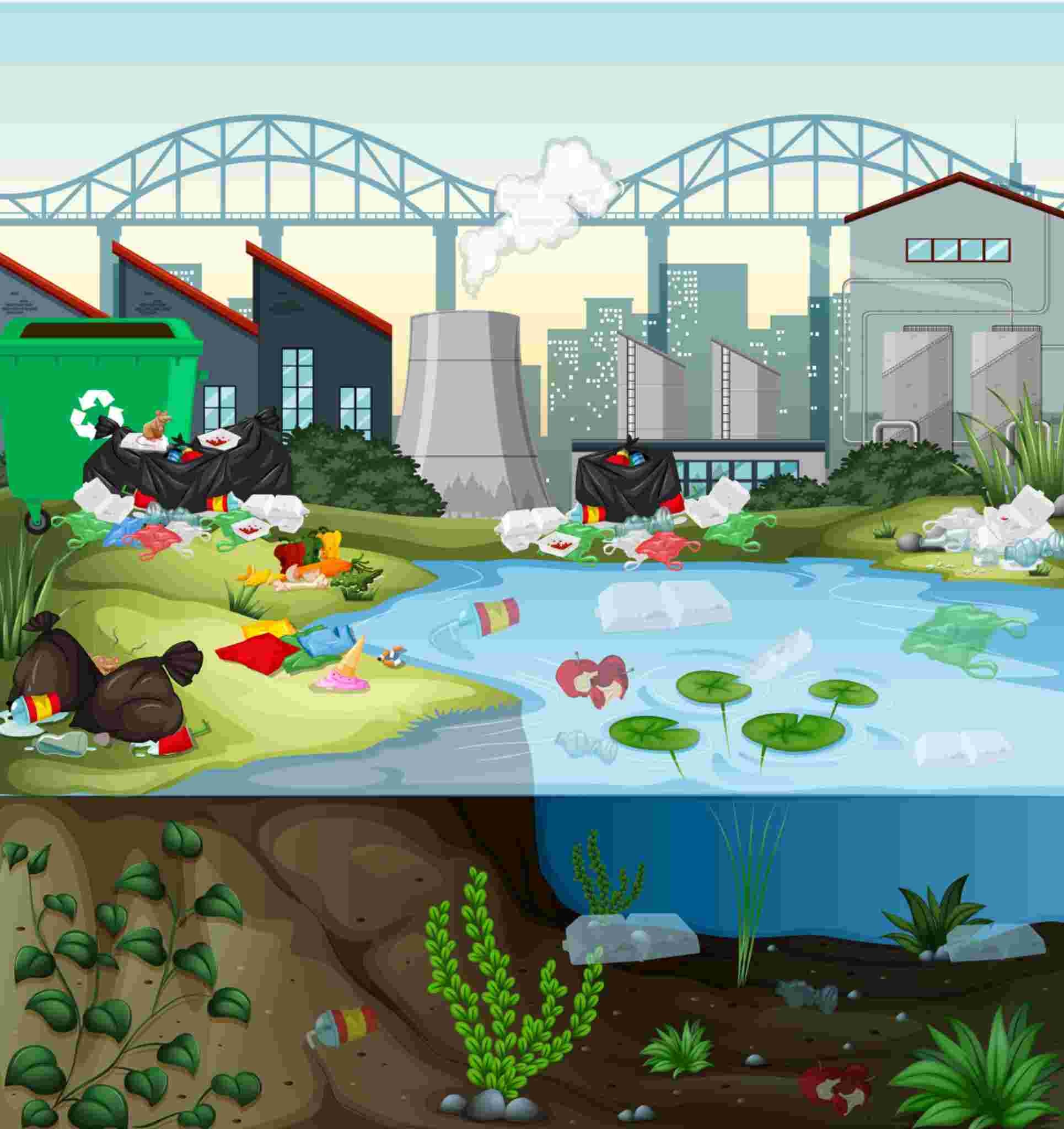Summary
-Industrial operations contribute significantly to water pollution. This is primarily through the discharge of wastewater containing heavy metals and organic pollutants. Hence, water quality degrades and harms aquatic ecosystems.
-Monitoring and managing contaminants such as heavy metals and phosphates is crucial for protecting water quality. This helps prevent the harmful health effects associated with exposure to polluted water.
-Innovative technologies and regulatory frameworks also play essential roles in effective water quality management.
Industries face significant water quality challenges, including heavy metal contamination, chemical spills, and nutrient runoff. These issues impact ecosystems and human health. This article explores the causes, effects, and management strategies related to these water quality challenges in industrial operations.
Understanding industrial water pollution
It is important to understand that most heavy metal salts enter the environment as a result of human activity – mainly from emissions from mining and processing enterprises, as well as thermal power plants. In other words, this is anthropogenic pollution. Industrial activities are a significant source of water pollution, introducing toxic heavy metals into water systems primarily through wastewater discharge from factories. This point source pollution accounts for a considerable volume of harmful chemicals entering water bodies. The Central Pollution Control Board in India has reported millions of liters of industrial companies’ wastewater being released into rivers daily, highlighting the scale of the problem.
Certain industries, such as leather, mining, and chemical sectors, are notable contributors to heavy metal contamination in aquatic ecosystems. Mining activities, in particular, can result in the release of heavy metals and other toxins into water systems. Additionally, non-point source pollution, such as runoff from agricultural areas, can also contribute to heavy metal contamination in waterways. Comprehending the origins and effects of industrial water pollution is vital for crafting effective water quality management strategies. Tackling these sources directly allows us to protect our essential resource of present valuable water resources for future generations.
What are the main sources of industrial water pollution?
Industrial wastewater discharges are a primary source of contaminants that significantly impair the quality of nearby water bodies. These discharges often contain a mix of harmful chemicals, including heavy metals and organic pollutants, which can have severe environmental and health impacts. Chemical spills during industrial operations are common and cause a lot of problems in changing the chemistry of waterbodies. Accidents or mishandling of chemicals can lead to substantial releases of toxic substances into the environment, leading to water pollution issues and highlighting the importance of environmental factors.
These spills can occur during various stages of industrial processes, including:
- Manufacturing
- Transportation
- Storage
- Waste disposal
Runoff from industrial sites also plays a significant role in carrying harmful substances into local waterways. This runoff can include oils, heavy metals, and other pollutants, which accumulate in water bodies and negatively affect water quality. Understanding these various sources of contaminants is crucial for effective water quality management in industrial operations.
How do phosphorous affect water quality?
Even small increases in phosphate levels can lead to significant adverse effects on water quality and aquatic ecosystems. Phosphates are a key nutrient that, in excess, can cause nutrient pollution, leading to harmful algal blooms. These blooms can block sunlight and reduce oxygen levels in water, creating a hostile environment for aquatic life. Excessive phosphorus contributes significantly to this occurrence and needs immediate attention and tackling. When phosphate concentrations are elevated, they can disrupt aquatic habitats, affecting both plant life and benthic organisms. This disruption can lead to a cascade of negative impacts on higher trophic levels, including fish and other marine species. The high levels of phosphates can also result in decreased oxygen levels in water, leading to the death of aquatic animals and plants. Addressing phosphate pollution is essential for maintaining healthy water systems and protecting the biodiversity that relies on them.
What are harmful algal blooms?
Harmful algal blooms (HABs) are a growing concern in industrial areas, driven by the overabundance of nutrients like phosphates and nitrogen from industrial sources. These blooms can have devastating effects on ecosystems, causing significant mortality in farmed fish and leading to economic losses within the aquaculture industry. The bloom from HABs, cyanobacteria, and red tides can further accelerate these issues, particularly during a HAB event. Toxins produced by harmful algal blooms can also accumulate in the food web, negatively impacting various marine species, including dolphins, turtles, and shellfish. More than half of the unusual mortality events in marine mammals are now linked to harmful algal blooms. Recent events have resulted in mass fatalities of marine life, including birds and manatees, and the presence of toxin production in these blooms is a significant concern. Exposure to harmful algal blooms can lead to harmful effects for instance, illnesses ranging from mild symptoms to severe health issues. Contact with contaminated water or consumption of tainted seafood can be a source of illness from harmful algal blooms. Drinking water supplies can also be affected, requiring public health advisories to prevent exposure.
Monitoring and managing heavy metals
Technological advancements such as remote sensing and IoT devices are significantly enhancing the monitoring of water quality. They provide real-time data from various water sources. IoT sensors enable continuous data collection on critical water quality parameters, facilitating prompt responses to pollution changes. The use of data analytics and machine learning helps predict water quality issues by analyzing historical and real-time data patterns. Numerous remediation techniques have been developed to remove heavy metals from wastewater, including adsorption, ion exchange, and membrane filtration. Advanced Oxidation Processes (AOPs) generate reactive species that effectively degrade heavy metal complexes in wastewater. These technologies are essential for mitigating the impact of industrial pollution on water systems.
Advanced monitoring solutions that provide real-time water quality data for diverse environmental applications are also essential. Monitoring buoys are equipped with smart sensors that continuously measure critical parameters such as phosphate levels, temperature, dissolved oxygen, and algal concentrations. By utilizing ultrasonic algae control technology in combination with precise monitoring, the buoys help detect and manage harmful algal blooms early. This prevents their negative impacts on aquatic ecosystems and water quality. The data collected by these buoys enable industries and environmental agencies to make informed decisions. Which ensures effective water quality management and protection of marine life and human health.
How do heavy metals impact human health & fisheries?
Heavy metals such as arsenic, cadmium, and lead pose significant health risks, leading to potential damage to vital organs like the liver and kidneys. It is essential to minimize exposure to these toxic substances to protect overall health. When heavy metals accumulate in aquatic organisms, they can enter the food chain, affecting both human health and wildlife. This contamination poses significant risks to both and especially in human where they may face gastrointestinal illness. The accumulation of heavy metals in organisms can occur even at low exposure levels, leading to long-term toxic effects.
Harmful algal blooms can create a thick layer of surface scum, impacting recreational activities and local economies. These blooms can cause sick sea lions and negatively impact fish populations like sardines and anchovies. High phosphate levels can decrease dissolved oxygen in water, leading to the death of aquatic animals and plants. The health of marine ecosystems is critical for the sustainability of fisheries and the broader food chain. Addressing water pollution from industrial sources is essential for maintaining the balance and health of these blue green environments, the water column, and energy. Additionally, the health of the ecosystem is vital for preserving these resources.

Illustration of water pollution sources/Source: Freepik @brgfx
Summary
In conclusion, industrial operations pose significant challenges to water quality, but understanding these issues and implementing effective solutions can lead to substantial improvements. From monitoring and managing heavy metals to addressing phosphate levels and harmful algal blooms, there are numerous strategies that can be employed to protect our water resources.
It is crucial for industries, regulators, and communities to work together to ensure clean water for future generations. By adopting innovative technologies and complying with regulatory frameworks, we can safeguard our ecosystems and promote a healthier environment.
